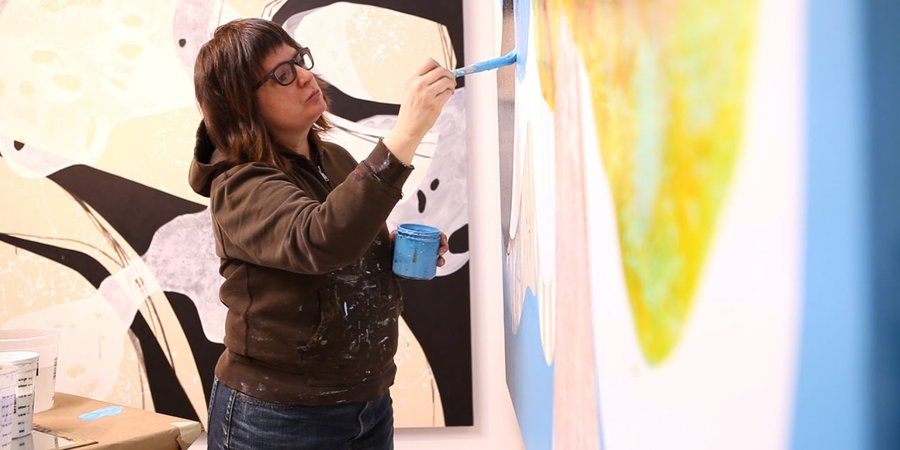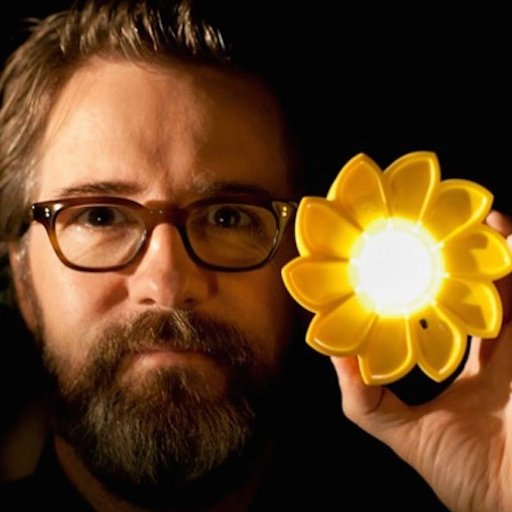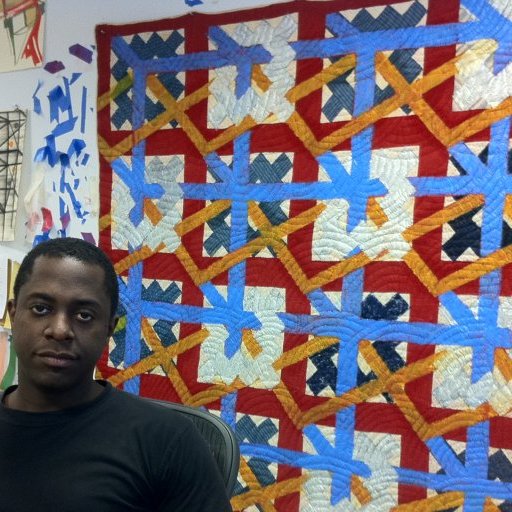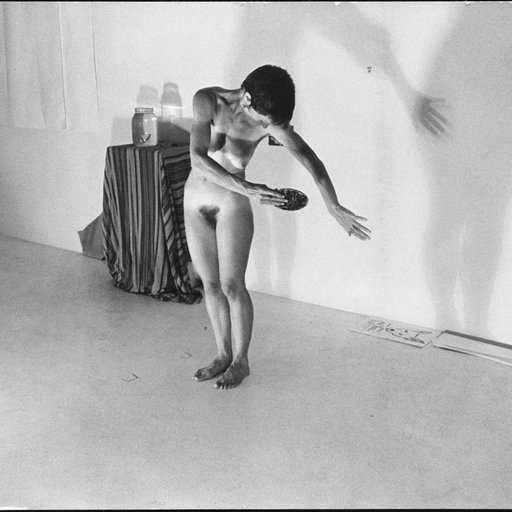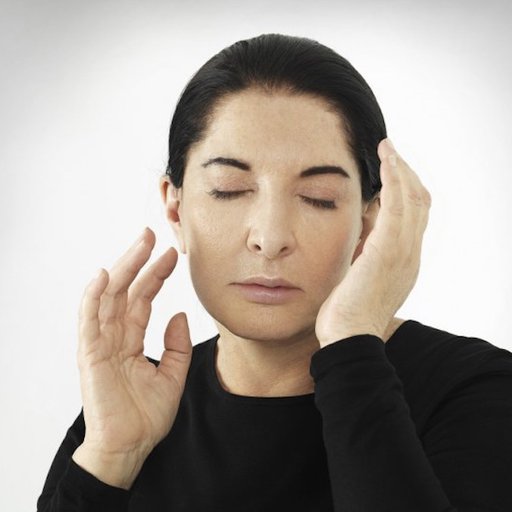Deftly combining nonfigurative gestures and potent political imagery, Carrie Moyer’s paintings and prints evoke the rich history of Modernist abstraction while maintaining her firm stance on social issues. As a co-founder (with photographer Sue Schaffner) of one of New York’s earliest lesbian public art initiatives (Dyke Action Machine! or DAM!, 1991-2008), Moyer help to bring over a decade of radical projects to the city and beyond. In this short essay, excerpted in its entirety from Phaidon’s new book Akademie X: Lessons in Art + Life, Moyer presents a semi-erotic image of an artist’s relationship with the works of the past and present, in addition to her 10 simple tips that all young artists need to hear.
My First Painting Crush
As a small child, I was often taken to the Detroit Institute of Art. I was completely mesmerized by Detroit Industry, Diego Rivera’s massive fresco cycle of 1933 that covered the walls of an ornate Beaux Arts courtyard inside the museum. On the lower register of the wall is a glorious depiction of the workers operating the Ford Motor plant. Up above, indigenous and Christian deities preside benignly over these earthly endeavours. Rivera’s magnificent mural gave me the sense that art could be both spectacular and aspirational. I’m still enchanted by his brilliant amalgam of religious iconography, graphic design, and utopian messaging.
Polyamorous About Art
My taste in art is catholic and, over the years, I have loved many different kinds of art and artists. Around the age of ten, I discovered the Blaue Reiter group of painters, especially Alexej von Jawlensky and his 1909 Portrait of Alexander Sakharoff, a sexy, androgynous dancer. This in turn led me to Max Beckmann, Christian Schad, and artists of the Neue Sachlichkeit. I’ve been smitten by everything from neolithic Japanese art from the Jomon period (12,000 BC), to mid-century biomorphic abstraction, to the Feminist Art movement of the 1970s, to Joan Miró, Morris Louis, Sister Corita, Stephen Mueller, Dona Nelson, and Nicola Tyson. Each new direction in the studio provides an opportunity for discovery. Right now, I’m very excited about Elizabeth Murray, Christina Ramberg, and the Hairy Who.
Facture and Feeling
I was an art student when I saw one of Kazimir Malevich’s Black Square paintings in person for the first time. To my surprise, I found myself quietly crying in front of the picture. Although its surface was cracked and yellowed, there was something incredibly poignant and beautiful about the canvas. It blew my mind that this modest, visibly hand-made object had unleashed abstraction on the world and so radicalized how we think about and make art.
Sharpen Your Visual Intelligence by Looking at Art in Person
Close looking is a means of gathering information in order to analyze a work of art within the parameters set by its maker. Through careful examination the object reveals its materials, size, scale; the processes and methods of its facture; the identity of the maker; its relationship to the history of the medium and genre as well as to the world at large. Using this form of connoisseurship to decide if art is ‘good’ or ‘bad’ would defeat the purpose. It’s more like being a scientist and learning how to analyze and identify what you’re looking at.
A Few Thoughts on Art Careers, Day Jobs, and Life Beyond School
1. Art is a 24/7 occupation.
2. There is no codified career path for artists. Each person makes it up as they go along.
3. The inner workings of the art world are often quite opaque (even for old-timers) – ask a lot of questions, find fellow travellers, and build a community around what you’re doing in the studio.
4. Try not to fixate on ‘breaking’ onto the scene. If you keep making interesting work, people will notice.
5. The standard post-graduation jobs – art handler, gallerina, artist’s assistant – often leave one feeling alienated from the very profession one wants to join.
6. Try out jobs that have nothing to do with art. Nonconforming life choices will enrich everything you do (including your work).
7. Move somewhere cheap for a while so you don’t need ten freelance jobs to support your studio practice.
8. If your day job does keep you away from your studio, be sure to make a gesture towards your art every day. Look up a grant or an artist. Buy some paint. Research a process. Stay connected to your ideas.
9. Don’t apply for everything under the sun just because you can. Grants and residencies are more than a notch on your belt or line on your CV. Read the fine print and apply thoughtfully – their benefits are calibrated for different stages in an artist’s career.
10. The art world is fickle and art careers have their ups and downs. You need to be able to work through the bust as well as the boom.
The Impossibility of Originality Has Been Completely Overstated
As any student or teacher can tell you, imitation is a time-honored mode of learning how to make and understand art. It’s then up to us to develop our own particular amalgam of influence, invention and experience.
Is it Important For Artists to Understand the Past?
Yes. For me, a big part of making art is creating a dialogue with artists from both the past and the future. I think of myself as being part of a long continuum of makers and thinkers. Painting in particular has a self-reflexive relationship with its own history. For this reason, it’s critical for painters to have a deep knowledge of the history of their own medium, including the evolution of the materials and tools used.
Where Does Art End and Politics Begin?
It doesn’t work that way – all art is political. To quote Toni Morrison, the great American writer, from a 2008 interview in Poets and Writers magazine:
"All good art is political! There is none that isn’t. And the [artists] that try hard not to be political are political by saying, ‘We love the status quo.’ We’ve just dirtied the word ‘politics,’ made it sound like it’s unpatriotic or something. That all started in the period of state art, when you had the communists and fascists running around doing this poster stuff, and the reaction was ‘No, no, no; there’s only aesthetics.’ My point is that it has to be both: beautiful and political at the same time. I’m not interested in art that is not in the world."
Assigned Reading and Viewing
Reading:
– Strauss, David Levi – Any writing
One of the most erudite, critical thinkers out there, Strauss often writes about the relationship between art and power.
– Tuchman, Maurice. The Spiritual in Art: Abstract Painting, 1890–1985. Los Angeles: Los Angeles County Museum of Art/Abbeville Press, 1986.
The catalogue for the 1986 exhibition at the Los Angeles Contemporary Museum of Art, an amazing collection of color illustrations plus essays on synesthesia, theosophy, alchemy, hermeticism, Zen and more. One of my favorite books.
– Skowhegan Lecture Archive. http://www.moma.org/learn/resources/archives/EAD/Skowheganf. Accessed 19 June 2014.
The Skowhegan Lecture Archive comprises more than 650 recorded talks delivered by visiting faculty during the School’s annual summer program in rural Maine from 1952 to the present. These candid, informal talks offer insight into the careers and creative processes of some of the most pioneering artists of our time.
Viewing:
– Graham, Dan, dir. Rock My Religion. Electronic Arts Intermix, 1984. Film.
Graham’s ‘documentary’ draws a direct line from Mother Ann Lee, the charismatic leader of the Shakers in the 1770s, to Patti Smith, the poet-queen of punk rock in the 1970s.
– Jarmusch, Jim, dir. Dead Man. Miramax Films, 1995. Film.
Shot entirely in luscious black and white, Dead Man is a psychedelic western about the vision quest undertaken by a mild-mannered accountant from Cleveland named William Blake (Johnny Depp) and Nobody (Gary Farmer), a Native American, who believes he’s met the reincarnation of his favorite British poet.











